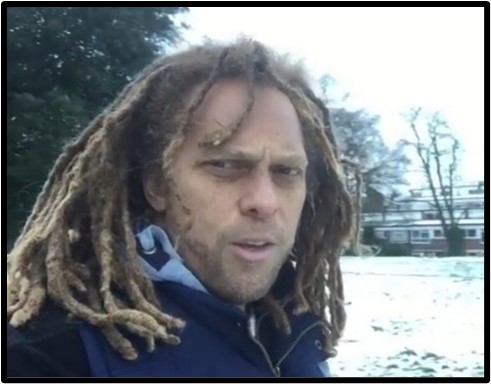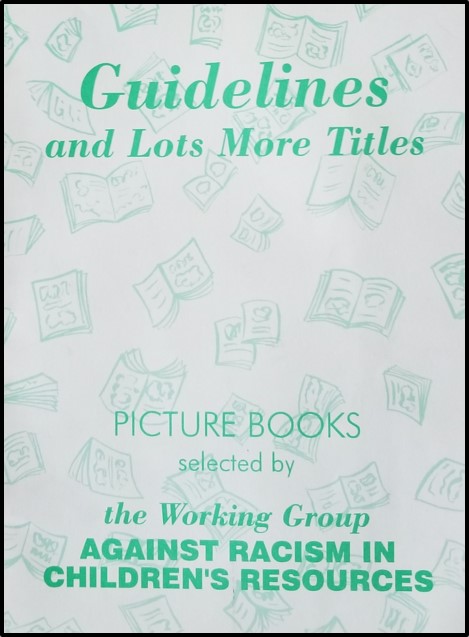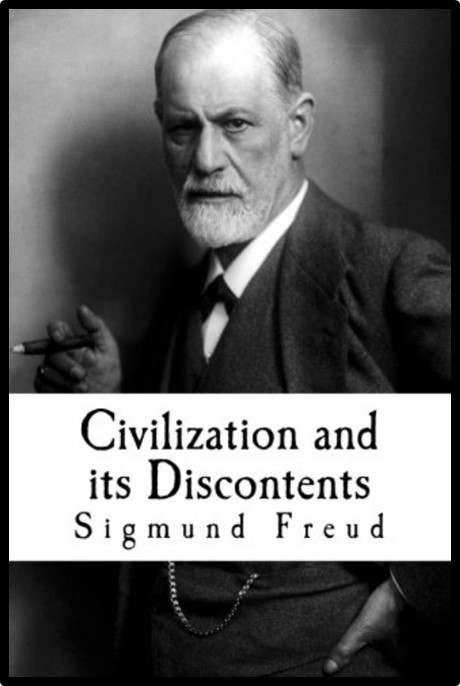REFLECTIONS ON RACE AND RACISM, IDENTITY AND DIFFERENCE - BY PATRICK TOMLINSON 2021
Date added: 08/10/21
Just know that even in the snow
You can continue to go
You continue to flow
You must continue to grow

David Neita (Poet and Lawyer)
Noticing Black History Month in the UK got me thinking about some work I was involved in during the last 25 years and other related matters. The poem above is by the Jamaican poet and lawyer David Neita. In 2007, I had the great privilege to meet him delivering a workshop on leadership and change. This was in Bromley-by-Bow in inner-city London as part of a post-graduate course in strategic leadership for social care. What I remember about him is his determination in overcoming obstacles, as well as his humour, compassion, and creativity. He showed how humour and lightness can be a better way of solving problems. Not everything changes through seriousness. As Friedman (1999, p.67) states,
Playfulness can get you out of a rut more successfully than seriousness.
I wonder about the metaphor of the snow in the poem. He explained that for a Jamaican with dreadlocks becoming a lawyer in England was immensely challenging to put it mildly. I think he also enjoyed challenging the system a bit. He is an inspiring man. At the end of this article, I include a link to his Tedx Talk and a poem dedicated to carers. Another inspiring and poetic black man, Muhammad Ali, also had an impact on me much longer ago. When I was around 13 years old, I read his autobiography, ‘The Greatest’. It was the first time I knew about racism in the extreme way he experienced and described it. He has drawn attention to the metaphorical associations of black and white. As a child, he asked his mother,
Why is Jesus white with blond hair and blue eyes? The angels are all white. Tarzan the king of Africa was white. Miss America was always white. And the president lived in a White House. Santa Claus was white. And everything bad was always black.
I began my work in 1985 at the Cotswold Community in England. It was a Therapeutic Residential Community for up to 40 boys who had suffered serious childhood adversity, such as abuse and neglect. Black children placed there were probably in a minority of 1-5 or less. Black staff were in an even smaller minority. The Cotswolds region in England is famous for its quaint villages and its picturesque countryside and not exactly, for being very multi-cultural.
As well as being a care worker, one of my early roles was to lead on creating a positive culture in the children’s home I worked in, where we had 10 boys. Culture in this context meant - environment, furnishing, décor, homely, suitable toys, books, music, etc. Only later when I was in a management role did it become clear to me that our homes were far more reflective of white than black culture. We had made some efforts around food and other aspects, but for example, most images of people, pictures, photos, depicted white people. If you were a black child, you would not have seen yourself represented much in the environment. This was further exacerbated by the lack of black staff role models.
While progress may have been made over the years, reality blindness is part of human nature. Inevitably, we are mostly influenced by our immediate environments. This is our reality. If I am working with someone who is setting up a children’s home, I might ask, what kind of home will you make it? What will you have in it? Usually, the answer will be something like – it will be a typical family home. Then I ask what is a typical family home? The answer usually reflects the kind of home the person is familiar with and grew up in. Sometimes people say if they have a child from an ethnic group moving in, they will adapt the home to reflect the child’s needs. I agree that adaptation is important, but the home should also reflect the society and culture it is in - regardless of whether the children living in the home are black or white, etc. I know that improvements are made on these issues over time and there are examples today of excellent practice. But we need to continuously be open to learning and examining ourselves.
 Working Group Against Racism in Children's Resources At the Cotswold Community, I discovered the charity, The Working Group Against Racism in Children’s Resources. The Group (1996, p.2) explains its objective,
Working Group Against Racism in Children's Resources At the Cotswold Community, I discovered the charity, The Working Group Against Racism in Children’s Resources. The Group (1996, p.2) explains its objective,
“The work underlines a knowing that human equality arrives with birth; it is the inability of our world that fails to develop that fulfilment. One way of progress then is through awareness and application. The Working Group Against Racism in Children’s Resources participates in this way of moving forward.”
I found it very helpful and joined our organization as a member. It helped improve our resources for children, such as toys and books. The Group published recommendations on books and toys as well as findings from their research. Thanks to Amazon, I found a copy of one of their publications we had at the Community.
One of the simple facts I learned from the Group, was that illustrated images and stories including black children were seriously underrepresented in children’s books. WGARCR (1996, P.9) states, “Only about 25 picture books with main black characters in a modern setting were produced by UK publishers before 1994.” Of these 16 were originally published outside the UK. And when black characters were included, they were often negative, stereotyped, and inaccurate. For example, whereas illustrations of white children’s faces were usually accurate, the facial features of black children were often exaggerated. Black characters were also disproportionately represented negatively. WGARCR claimed that in contrast in USA and Canada had a far more positive representation. It is interesting in a process that involves so many people - writers, illustrators, editors, and publishers - how such distortions can get past everyone. And we as consumers don’t notice. It is an example of conscious and unconscious racism.
At the Community, we tried to improve things. All children, not just black children benefited from this, as our culture became more enriching and diverse. Positive representations of black children are good for white children. To not appreciate or be knowledgeable about different cultures can be thought of as a deprivation. We also added a focus on culture, race, religion, discrimination in our staff training. I am not claiming any of this was particularly great or admirable, but it is the reality of how things were. The little things we did were important and made a difference. Looking at a copy of the training programme I led, which was an in-house 3-year course - these were some of the themes among many others.
1. Cultural Issues: Meeting the Cultural and Religious Needs of Individuals in a Multi-Cultural Group
Reading: Arnold, E. - Intercultural Social Work
2. Cultural Issues: Developing a Multi-Cultural Perspective and Anti-Discriminatory Practice
Reading: Acharyge, S. - The Doctors Dilemma: Practice of Cultural Psychiatry in Multi-Cultural Britain
3. The Identification Needs of Black children in a Residential Treatment Setting
Reading: Brummer, N. (1988) White Social Workers/Black Children: Issues of Identity
Banks. N. - Techniques for Direct Identity Work with Black Children
4. Psychotherapeutic Work with Black Children - Working with Racial Issues in Inner and Outer Reality Reading: Andreous, C. (1992) Inner and Outer Reality – in Children and Adolescents
5. Anti-Discriminatory Practice: Race and Racism - Working with Institutional Racism and Developing a Non-Racist Practice
Reading: Cooper, A. (1989) Getting Started: Psychodynamics, Racism and Anti-Racism
In the mid-1990s I attended a master’s degree In Therapeutic Child Care at Reading University. It helped develop my understanding of some of these issues. The training programme we created in the Community also included gender issues, sexuality, and sexism. The Community had a culture of enquiry and an openness to learning. Part of that process was about working through resistance, trying to make ourselves and our culture more conscious.
Organizational Consultancy
During the same time, our all-white, mostly male management team of 10 realized that we had organizational race-related dynamics that needed to be worked on. We invited Rosemond Grant who referred to herself as a black organizational consultant to do some work with us. Her brother was Bernie Grant, the Labour MP, who was one of Britain’s first black members of parliament. They were born in British Guiana in the Caribbean before moving with their family to England. I just found an interesting and excellent tribute article on Bernie Grant, marking the 20th Anniversary of his passing (See References).
What I remember about the consultations with Rosemond is that she got us to think about being white and the differences between us. She asked us in a group, simple questions like, where we grew up, what kind of school did we go to, did we have a religion in childhood, and so on. We went around in turns answering these questions. The impact was that it made obvious our differences, most of which we had no idea about. The learning point, for me anyway, was that by homogenizing ourselves and denying our differences, there was a serious risk that the sense of being different or other, would be projected onto black staff and children. This projection might happen in subtle and unconscious ways. Even if it wasn’t more blatant, it would be an oppressive burden on anyone who experienced it. I carried some of this learning into teams I worked with. For instance, I asked one small staff group to describe what a typical mealtime would be like when they were children. The differences could be so unusual you would think we were brought up on different planets. What would resemble family life to one person would be nothing like it to another. These differences could be between white people, black people, or both.
Inverted Racism
Another point that came up through the consultancy was the possibility that because of being anxious about being racist or perceived as being so, we might not act helpfully. A kind of inverted racism. For example, by avoiding things that we wouldn’t normally do. Or we might feel and act more tentatively. The consultation process felt helpful, and we hoped it made some difference in improving our awareness and making some changes. One simple change we made was to advertise for staff in papers that had a more diverse readership. And we were more proactive in our messages about valuing a racially diverse staff group.
Identity and Difference
There is a human tendency towards homogenization. We can underestimate the power of our environments and believe we are more in control and conscious of what we think and do than we are. For example, I don’t think anyone can accurately say, ‘I’m not racist’. My position is that I try not to be racist but am open to considering how I might be. How prejudice can develop became clear to me on occasions when I lived in different national border locations. Before moving to these places, I had no view of people on either side of the border. Living in a new location, I noticed prejudice develop in me. Once after a few months and another time after a few years. I noticed my negative reactions towards those on the other side of the border who I had never even met. It surprised me how this happened. No one gave me long lectures about anything it just seeped in gradually over time. A word or comment here and there.
 Freud (1930) wrote about some of this in his essay, ‘Civilization and its Discontents’. He argued that humans are naturally aggressive creatures, which is undeniable throughout history. It doesn’t mean that we aren’t also many other things. And some of those other things are often a way of managing our aggression productively. Part of our conflict is between the wish to do just as we please, the pleasure principle, and society’s demand upon us to be social and civilized, the reality principle. In our struggle with this, we may externalize our aggression onto others who we perceive as different. We create an identity, which depends upon difference. If we were all identical there could be no individual identity. When there are no big obvious differences, we tend to find small cultural and other differences. For instance, jokes about the foods different people eat, accents, the weather, etc. For example, in Lisbon, Portugal, people have happily told me that it is always grey and raining in Porto. And that Portugal has the best soil in the world for growing grapes to make port wine, as well as vegetables, while in Spain, sadly they have, “only yellow soil!”. The attention to these types of differences is common throughout the world. Freud (1917) referred to this as, “the narcissism of minor differences.” When tensions escalate, for instance, due to adverse economic conditions and poverty, the minor differences can escalate into major and hostile, dangerous differences. Freud (1930) distilled the nature of the problem,
Freud (1930) wrote about some of this in his essay, ‘Civilization and its Discontents’. He argued that humans are naturally aggressive creatures, which is undeniable throughout history. It doesn’t mean that we aren’t also many other things. And some of those other things are often a way of managing our aggression productively. Part of our conflict is between the wish to do just as we please, the pleasure principle, and society’s demand upon us to be social and civilized, the reality principle. In our struggle with this, we may externalize our aggression onto others who we perceive as different. We create an identity, which depends upon difference. If we were all identical there could be no individual identity. When there are no big obvious differences, we tend to find small cultural and other differences. For instance, jokes about the foods different people eat, accents, the weather, etc. For example, in Lisbon, Portugal, people have happily told me that it is always grey and raining in Porto. And that Portugal has the best soil in the world for growing grapes to make port wine, as well as vegetables, while in Spain, sadly they have, “only yellow soil!”. The attention to these types of differences is common throughout the world. Freud (1917) referred to this as, “the narcissism of minor differences.” When tensions escalate, for instance, due to adverse economic conditions and poverty, the minor differences can escalate into major and hostile, dangerous differences. Freud (1930) distilled the nature of the problem,
The fateful question of the human species seems to me to be whether and to what extent the cultural process developed in it will succeed in mastering the derangements of communal life caused by the human instinct of aggression and self-destruction.
When we feel unsafe, and our identity is felt to be under threat the need to focus on difference is likely to increase. Neuroscientists such as Bruce Perry (2021) and Stephen Porges (2017) talk a lot about the importance of feeling safe and how this improves our executive functioning - the ability to think and be sociable. When we feel unsafe our thinking part of the brain, the cortex, shuts down and we become more vigilant and reactive. We become more at risk of turning our neighbours into our enemies. On the one hand, we are limited by our human capacities, but at the same time in the right conditions, we’re hopeful about our potential. The psychoanalyst Michael Eigen (2004, xxv) powerfully captures this duality of human nature,
The horrific is endlessly faced. There are no facile exits. Yet psychic life persists, evolves, survives its annihilation, its extinction. Out of nowhere the fire that never goes out flares up, often at the point where no flame seemed to be possible.
Creativity, art, music, culture, and social connectedness, act as a counterbalance to our more destructive tendencies. Porges explains in his polyvagal theory how the mobilization of the sympathetic nervous system, can be a playful response as well as a fight/flight one. Our safety and survival can be improved by moving towards as well as away from others.
Borders and Boundaries
Tensions are often played out around borders and other boundaries. As we know, borders can be a point of both conflict and identity. We can be against borders and for them. A boundary separates what is on either side but also connects the two. A person cannot be separate without another to be separate from. We have an ambivalent relationship with boundaries. We need them to feel safe and we need to break them to be free. Boundaries can encourage and inhibit creativity. Civilization can be seen as a process of the ongoing re-mapping of boundaries. Progress in civilization is slow. In 1933 when the Nazi Party took control of Germany, Freud remarked,
What progress we are making. In the Middle Ages, they would have burned me. Now, they are content with burning my books.
Tragically, we were to discover that things were not much improved from the Middle Ages.
 In response to contemporary border issues around the world, the Hungarian Canadian sociologist Frank Furedi, who lives in England, writes (2020) about, “why borders matter and why humanity must relearn the art of drawing boundaries.”
In response to contemporary border issues around the world, the Hungarian Canadian sociologist Frank Furedi, who lives in England, writes (2020) about, “why borders matter and why humanity must relearn the art of drawing boundaries.”
A basic part of our identity is tied to our national citizenship. For example, I say I am English, rather than British or a UK citizen. The preference could be a positive affirmation - identification with what I am. Or it could be more of a negative affirmation - identification with what I am not (i.e., Welsh, Scottish, or Irish). The preference could be a bit of both, and it can change. In America where I live now, many people’s families have been here a relatively short time, such as less than 150 years. Some are identified strongly with their heritage and others less so. My wife’s family originate from the Soviet Union where her great grandparents immigrated from. They were among many Jews fleeing persecution. Once in America, many changed their names or had them changed, from Russian sounding names to American sounding names. There has been some debate as to how and why this happened. However, it seems clear that often it was done to blend in and not be conspicuous (Fermaglich, 2018). I think changing a surname can be like losing part of one’s identity. Especially when it is for a negative reason such as being discriminated against. Every time we say or write our name it affirms who we are. How many thousands of times do we do that? When we introduce ourselves with our name, it not only reminds us of our history, but it can evoke curiosity in others. Our identity is further reinforced. White Jews aimed to blend in by changing their names. They wanted to reduce people’s interest in them and not stand out. A black person cannot change the colour of their skin. It is a tragedy of racism that many have wished they could hide safely behind white skin.
In America, I am officially referred to as a Resident Alien. It seemed strange to me when I first experienced that. I thought Aliens were only from outer space. California is going to stop using the term as it is considered offensive. I don’t find it offensive, but I can appreciate that some immigrants might. Quentin Crisp the flamboyant, English writer, raconteur, and actor who moved to New York aptly titled one of his books in 1997, ‘Resident Alien’.
I hope this article is helpful in some way. Reading a post on LinkedIn highlighting Black History Month got me thinking. The reflection has been helpful for me. The things I have discussed here are small steps that felt important at the time and still do. I have discovered more about Bernie Grant, and some of the movements and politics from his time. I have revisited Muhammad Ali, Sigmund Freud, and Quentin Crisp, among others. It has also got me thinking about the value of saying and sharing something. Thank you also David Neita.
Cast your cares – David Neita
You don't always have to be alright for everybody all the time
Sometimes you should express the worries occupying your own mind
It sends a message to others, so they know you're immortal too
And they too can comfort you when you are feeling blue
You're there for everyone always and on your spirit, they feed
But who returns your generosity in your hour of need?
Don't let them suck your energy
Don't let them suck you dry
Sometimes just have a breakdown and let them wonder why
Let them love you, let me love you
Despite your weaknesses, they've drawn on your strengths for far too long
Make them aware that even you have crises
And for you too sometimes things go wrong
And never fear to cast your cares on the one who is always true
Do rest assured in the knowledge of God's love for you
Files
Please leave a comment
Next Steps - If you have a question please use the button below. If you would like to find out more
or discuss a particular requirement with Patrick, please book a free exploratory meeting
Ask a question or
Book a free meeting













